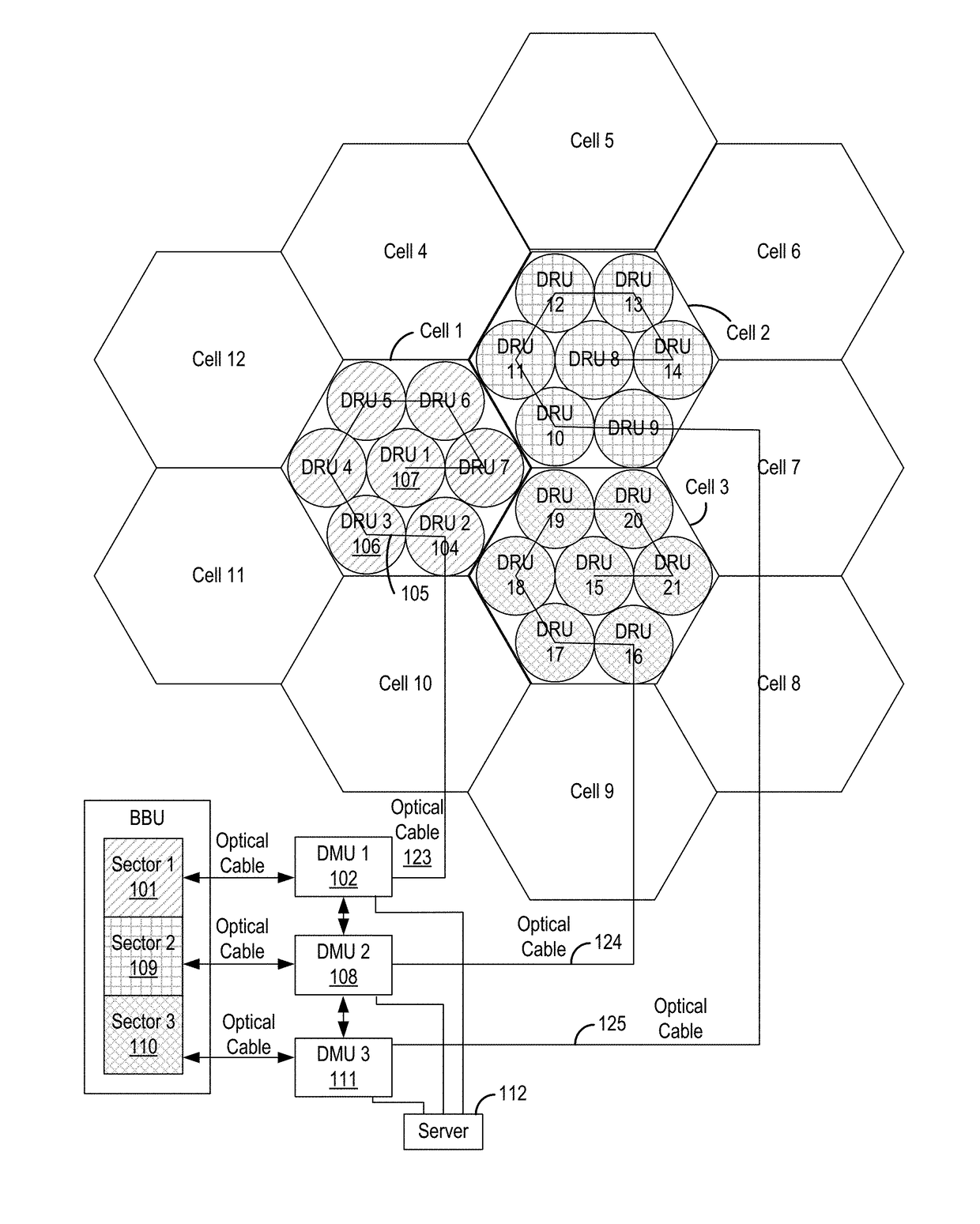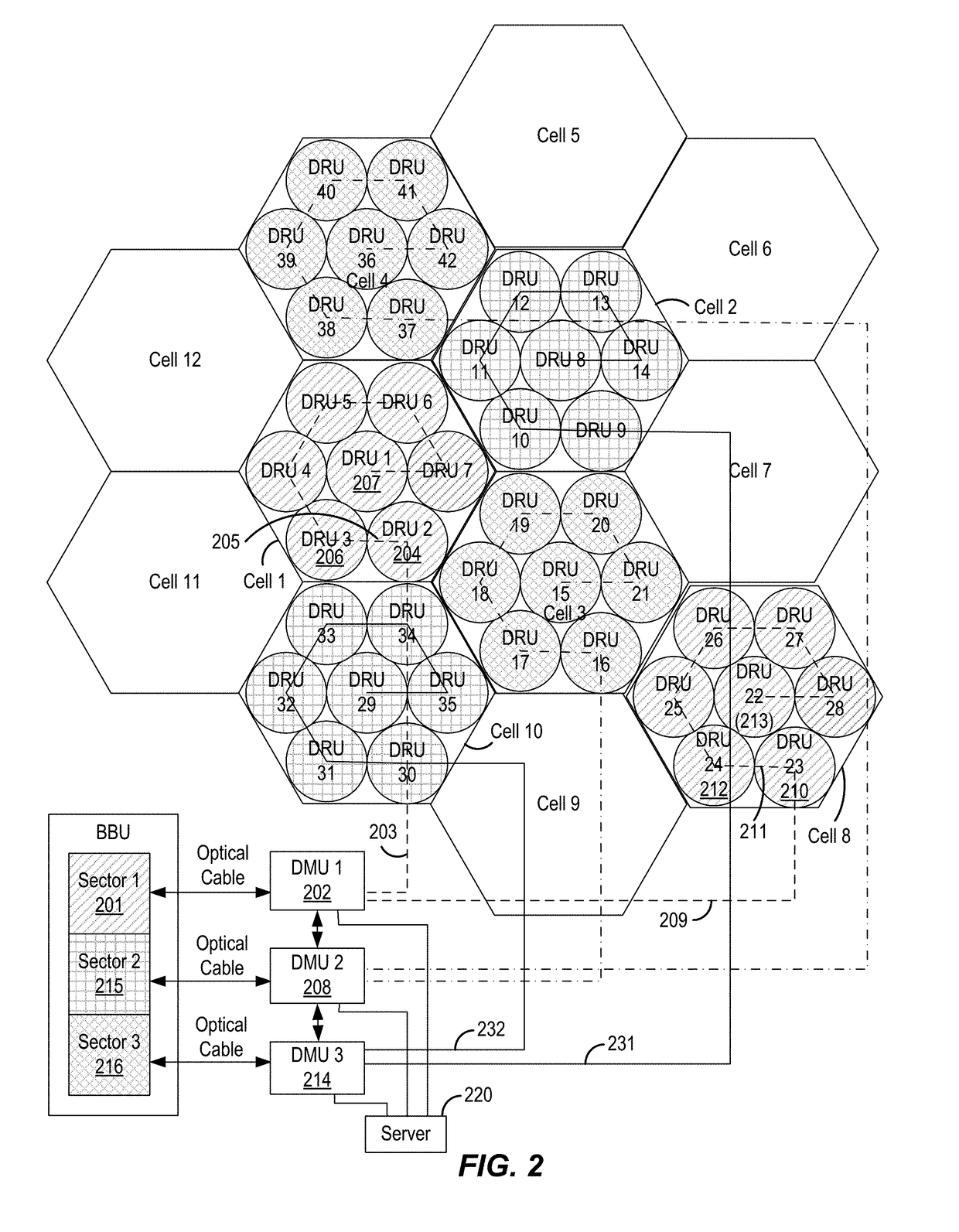Virtual radio access network using software-defined network of remotes and digital multiplexing switches
a software-defined network and remote technology, applied in data switching networks, site diversity, baseband system details, etc., to achieve the effect of reducing system power consumption, reducing hardware requirements, and reducing system cos
- Summary
- Abstract
- Description
- Claims
- Application Information
AI Technical Summary
Benefits of technology
Problems solved by technology
Method used
Image
Examples
Embodiment Construction
[0031]A distributed antenna system (DAS) provides an efficient means of utilization of base station resources. The base station or base stations associated with a DAS can be located in a central location and / or facility commonly known as a base station hotel. A traditional DAS network includes one or more digital access units (DAUs) that function as the interface between the base stations and the digital remote units (DRUs). The DAUs can be collocated with the base stations. The DRUs can be daisy chained together and / or placed in a star configuration and provide coverage for a given geographical area. The DRUs are typically connected with the DAUs by employing a high-speed optical fiber link. This approach facilitates transport of the RF signals from the base stations to a remote location or area served by the DRUs. A typical base station comprises 3 independent radio resources, commonly known as sectors. These 3 sectors are typically used to cover 3 separate geographical areas with...
PUM
 Login to View More
Login to View More Abstract
Description
Claims
Application Information
 Login to View More
Login to View More - R&D
- Intellectual Property
- Life Sciences
- Materials
- Tech Scout
- Unparalleled Data Quality
- Higher Quality Content
- 60% Fewer Hallucinations
Browse by: Latest US Patents, China's latest patents, Technical Efficacy Thesaurus, Application Domain, Technology Topic, Popular Technical Reports.
© 2025 PatSnap. All rights reserved.Legal|Privacy policy|Modern Slavery Act Transparency Statement|Sitemap|About US| Contact US: help@patsnap.com



